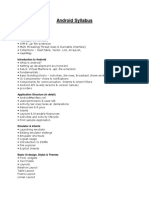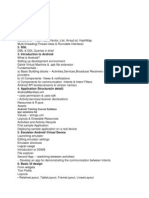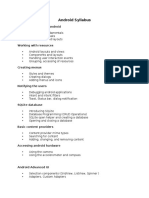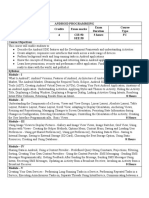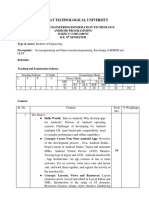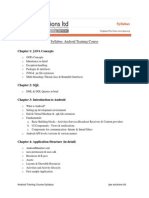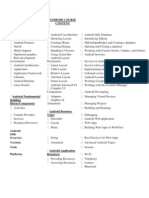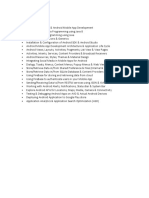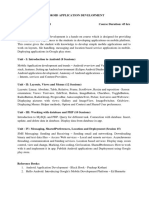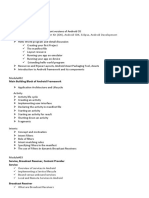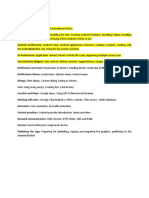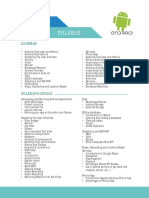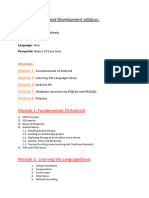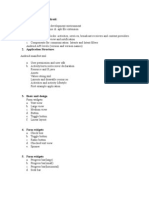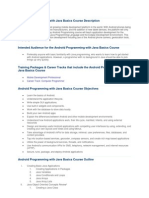0% found this document useful (0 votes)
16 views2 pagesAndroid Syllabus
The document outlines the syllabus for an advanced Android training course, covering topics such as the Android environment setup, application structure, intents, fragments, database management, and advanced features like location services and telephony API. It includes practical aspects like UI design, using content providers, and implementing broadcast receivers and services. The course aims to equip learners with comprehensive knowledge and skills in Android development.
Uploaded by
rijkjayaCopyright
© © All Rights Reserved
We take content rights seriously. If you suspect this is your content, claim it here.
Available Formats
Download as PDF, TXT or read online on Scribd
0% found this document useful (0 votes)
16 views2 pagesAndroid Syllabus
The document outlines the syllabus for an advanced Android training course, covering topics such as the Android environment setup, application structure, intents, fragments, database management, and advanced features like location services and telephony API. It includes practical aspects like UI design, using content providers, and implementing broadcast receivers and services. The course aims to equip learners with comprehensive knowledge and skills in Android development.
Uploaded by
rijkjayaCopyright
© © All Rights Reserved
We take content rights seriously. If you suspect this is your content, claim it here.
Available Formats
Download as PDF, TXT or read online on Scribd
/ 2
